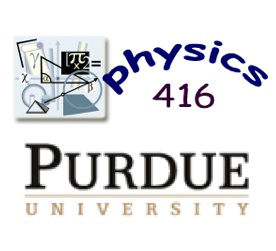We finish the van der Waals equation of state, and use it to illustrate the liquid-gas phase transition. It turns out that at low pressure, the van der Waals equation of state has a wiggle where (dp/pV)>0. Since this would cause an explosion, the system instead undergoes phase separation so that part of the container has liquid, and part has gas in it.
More is different: We discuss the failure of reductionism. Reductionism is the idea that you will learn everything about an object by breaking it into its smallest bits -- like atoms, then electrons and protons, then quarks, then strings. But large collections of particles (like liquids, gases, and solids) have many properties which aren't really due to their constituents per se, but rather are due to larger organizing principles, and the symmetry of the associated phase. Example: All solids are hard, even though they're made out of different substances. So the property "hardness" is not actually caused by the particular form of the potentials for the particular atoms in that solid. Rather, it's due to the symmetry of the regular crystalline structure the atoms take, and is independent of the type of atom.
To illustrate, we discuss several phases of matter, and identify the corresponding "order parameter", which is a measurable quantity that captures the symmetry of the phase.
Visual Aids: Rotini pasta to demonstrate twisted nematic phases. Specimens from my rock collection: quartz, amethyst, hematite, and others to see how all crystals are similar, despite being made from different atoms. The "sameness" manifests itself in the basic property of a solid: being hard. The "differenc" manifests itself in color, and in the shape of the crystals, which reveal the underlying quantum mechanics of how the chemical bonds form from atom to atom. Plus, the return of the squishy crystal to illustrate phonons. 0
Lecture Audio